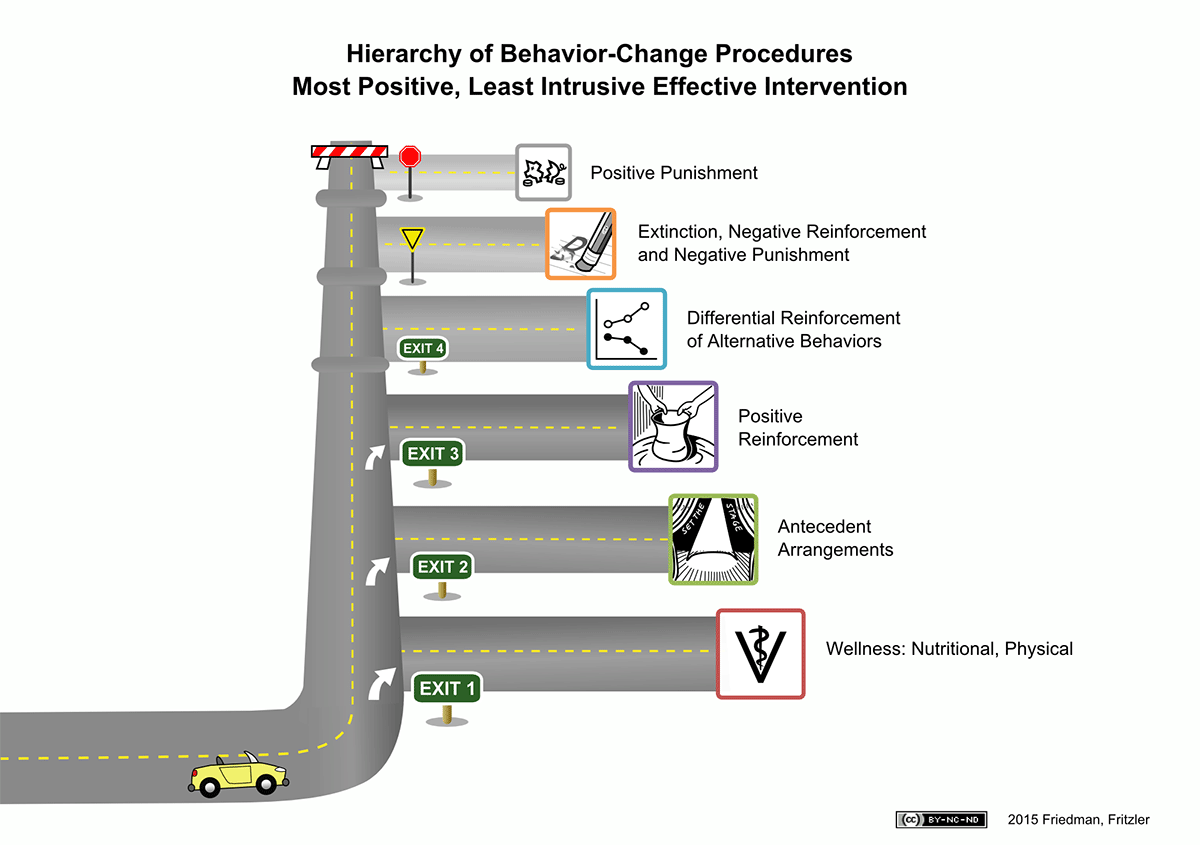Behavior Change Procedures
Derived from “Hierarchy of Procedures for Humane and Effective Practice” by Susan G. Friedman et. al. which is meant to guide professionals in their decision-making process during training and behavior modification. It is based on ethology, the scientific study of animal behavior, and uses terms from that field.
Changing behavior of individuals and organizations is a critical job function of managers and executives. As such, much of the materials available in popular business and management literature is watered-down behavior science. There is more overlap than you might think between training dolphins and managing people.
These behavior change procedures are listed from the most positive, least invasive to the least positive, most invasive methods. Start with the least invasive procedure possible before escalating. Level five should be avoided. Level six should be treated as a last resort.
Loose Translation for People in Organizations
- Ensure physical and emotional security
- Encourage behavior by setting up the environment, processes, and norms
- Give encouraging feedback
- Use critique and coaching
- Shape behavior by removing rewards for an undesired behavior or reducing the consequences of a desired behavior
- Discourage undesired behavior by doling out punishment
ORIGINAL: Hierarchy of Procedures for Humane and Effective Practice
- Health, nutritional, and physical factors: Ensure that any indicators for possible medical, nutritional, or health factors are addressed by a licensed veterinarian. The consultant should also address potential factors in the physical environment.
- Antecedents: Redesign setting events, change motivations, and add or remove discriminative stimuli (cues) for the problem behavior.
- Positive Reinforcement: Employ approaches that contingently deliver a consequence to increase the probability that the desired behavior will occur.
- Differential Reinforcement of Alternative Behavior: Reinforce an acceptable replacement behavior and remove the maintaining reinforcer for the problem behavior.
- Negative Punishment, Negative Reinforcement, or Extinction (these are not listed in any order of preference):
- Negative Punishment: Contingently withdraw a positive reinforcer to reduce the probability that the problem behavior will occur.
- Negative Reinforcement: Contingently withdraw an aversive antecedent stimulus to increase the probability that the right behavior will occur.
- Extinction: Permanently remove the maintaining reinforcer to suppress the behavior or reduce it to baseline levels.
- Positive Punishment: Contingently deliver an aversive consequence to reduce the probability that the problem behavior will occur.
